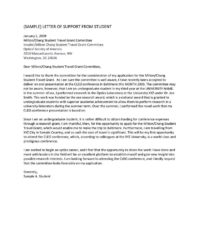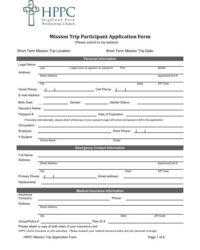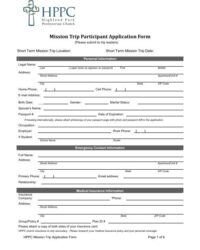Utilizing such a structured approach streamlines the selection process, enabling organizers to compare applicants fairly and identify individuals best suited for the specific mission. It also serves as a valuable record-keeping tool, facilitating communication and logistical planning. For potential participants, it provides clarity on expectations and requirements, allowing them to discern whether the opportunity aligns with their abilities and aspirations.
Understanding the function and advantages of this organizational tool is fundamental to exploring related topics, such as best practices for designing effective forms, strategies for evaluating applicant qualifications, and the legal and ethical considerations involved in international travel for charitable work.
Key Components of a Mission Trip Application
Effective applications facilitate thorough applicant screening and ensure preparedness for the specific challenges and objectives of the mission. Several essential elements contribute to a comprehensive and informative application process.
1. Personal Information: Basic identifying details, including full name, contact information, date of birth, and emergency contact information, are fundamental for record-keeping and communication.
2. Spiritual Background: Information about an applicant’s faith journey, church affiliation, and spiritual motivations helps assess alignment with the mission’s spiritual goals.
3. Skills and Experience: Details regarding relevant skills, such as language proficiency, medical training, or construction experience, allow organizers to match individuals with specific tasks and responsibilities.
4. Health Information: Disclosing any pre-existing medical conditions, allergies, or required medications ensures the safety and well-being of participants and facilitates appropriate medical preparations.
5. Character References: Contact information for individuals who can attest to an applicant’s character and suitability for the mission provides valuable insights into their personal qualities and reliability.
6. Trip Specific Questions: Targeted questions relevant to the particular mission, such as experience with specific cultures or willingness to perform certain tasks, enable a more accurate assessment of an applicant’s fit for the specific context.
7. Legal and Consent Forms: Including necessary waivers, liability releases, and consent forms ensures legal compliance and protects both the participants and the organizing entity.
8. Statement of Purpose: A written statement explaining the applicant’s motivation for participating in the mission provides valuable insight into their commitment and understanding of the trip’s purpose.
A well-designed application gathers comprehensive data, enabling informed decision-making and promoting the success of the mission by ensuring participant preparedness and suitability.
How to Create a Mission Trip Application Template
Developing a comprehensive application template is crucial for selecting suitable participants and ensuring a successful mission trip. A well-structured template facilitates efficient data collection and informed decision-making.
1. Define Objectives and Scope: Clearly outline the mission’s purpose, goals, and activities. This clarity informs the application’s content and ensures alignment between participant expectations and trip requirements.
2. Determine Essential Information: Identify the specific data points required from applicants. This includes personal details, skills, experience, health information, and references.
3. Structure the Application: Organize the application logically, grouping related questions together. Clear headings and concise instructions enhance clarity and ease of completion.
4. Craft Clear Questions: Use precise language to avoid ambiguity. Open-ended questions can elicit valuable insights into motivations and experiences, while closed-ended questions facilitate efficient data analysis.
5. Incorporate Legal and Ethical Considerations: Include necessary waivers, liability releases, and consent forms to ensure legal compliance and protect all parties involved.
6. Review and Refine: Thoroughly review the template for clarity, completeness, and accuracy. Pilot testing the application with a small group can identify areas for improvement before widespread distribution.
7. Choose a Distribution Method: Select an appropriate method for distributing and collecting applications, whether online forms, printable documents, or a combination of both.
8. Establish an Evaluation Process: Develop clear criteria and procedures for evaluating applications to ensure fair and consistent selection of participants.
A systematic approach to application development results in a valuable tool for participant selection and contributes significantly to a well-organized and successful mission trip.
Effective management of faith-based travel initiatives requires careful planning and execution, and a standardized application form serves as a cornerstone of this process. From gathering essential personal and health information to assessing relevant skills and experience, a well-designed template ensures thorough applicant vetting and fosters transparency. This structured approach not only streamlines the selection process but also promotes participant preparedness by clearly outlining expectations and requirements.
Ultimately, the diligent utilization of such a resource contributes significantly to the safety, efficiency, and overall success of these impactful endeavors. Investing time and effort in developing a comprehensive and user-friendly application demonstrates a commitment to responsible planning and sets the stage for a transformative experience for all involved.


